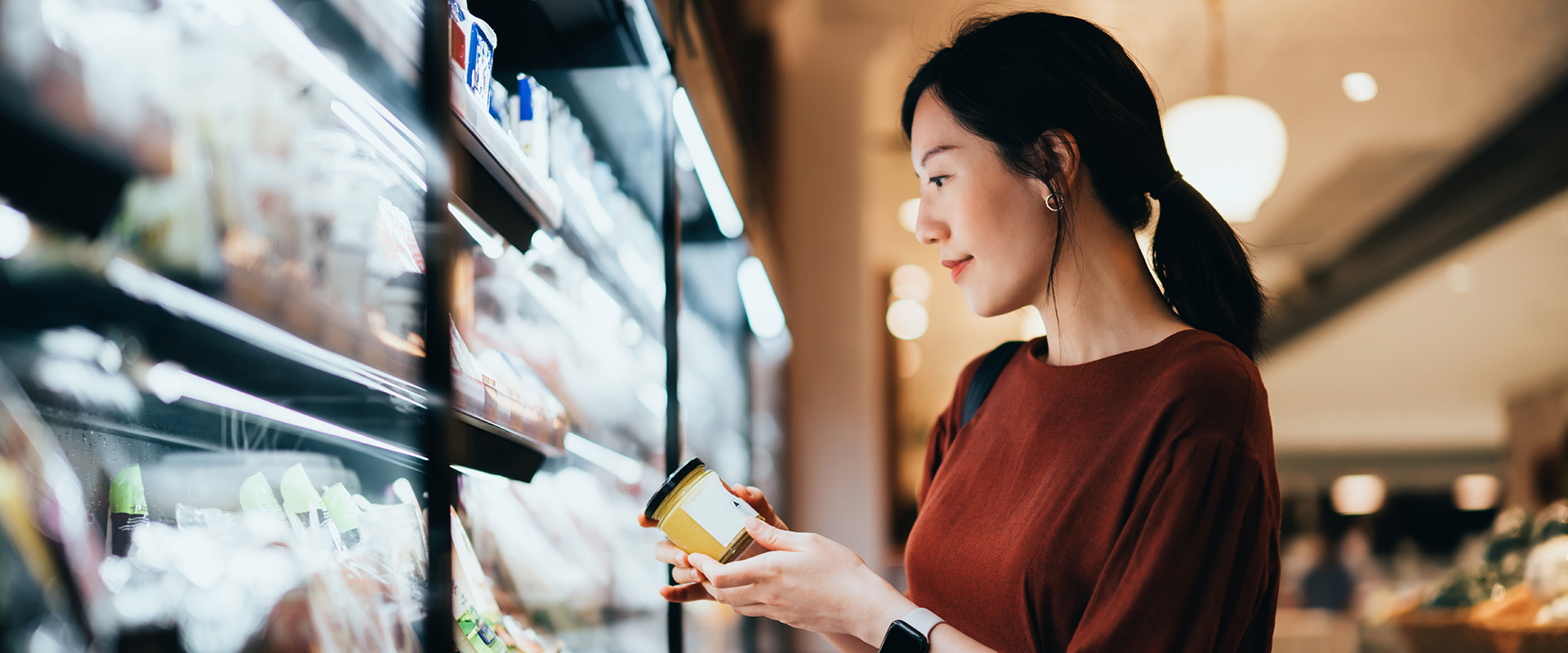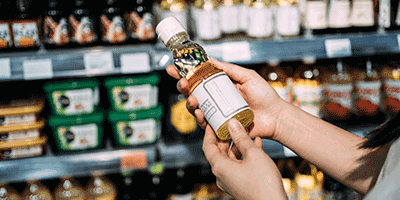
Brand Owner Perspectives on Packaging
- Article

Consumer packaged goods (CPG) brand owners and retailers faced a variety of challenges in 2021, including a continued surge in ecommerce demand and a supply chain crisis that has put a squeeze on raw materials. These challenges have required brand owners to evolve their packaging priorities: Not only must they adjust to the ongoing impact of COVID-19 while meeting pre-pandemic goals, but they must also develop strategies to align their brands with shifting consumer preferences.
To understand how brand owners are approaching strategic initiatives, L.E.K. Consulting conducted a series of in-depth conversations with packaging heads at 17 brand owners in 2021, focusing on three important questions that directly affect packaging decisions:
What is your outlook on sustainable packaging? How have sustainable initiatives been impacted by factors such as COVID-19?
How has the rise of ecommerce affected packaging innovation?
How has your brand approached its stock-keeping unit (SKU) count/product portfolio in recent years? What do you expect going forward?
Environmental concerns and consumer preferences have led many brand owners to place a priority on sustainable packaging and declare specific sustainability goals. Indeed, a recent L.E.K. analysis of approximately 80 CPG websites and annual reports revealed that the majority have set some form of sustainability goals (see Figure 1).
While there is no clear definition of sustainability — in fact, many brands list multiple terms in their sustainable goals — recyclable, compostable and reusable packaging are the most frequently identified by brand owners as their means of meeting sustainability goals (see Figure 2).
For example, one Tier 1 brand has pledged to make 100% of its packaging recyclable by 2025, with the longer-term goal of making at least 50% of its packaging from recycled materials by 2030. Another company told us they had recently refocused their sustainability efforts on using 100% recyclable packaging materials, using more recycled content, labeling products for recycling and increasing consumer education.
Despite a temporary pause during COVID-19 when the focus was on health and safety priorities, brand owners expect their use of sustainable packaging materials to continue to grow. Nevertheless, the various challenges to making sustainable packaging a reality include:
Infrastructure: Sustainable packaging requires a significant infrastructure investment. Furthermore, there is often lack of clarity regarding who in an organization should be responsible for these investments.
Supply of recycled content: Brands are concerned about meeting volume requirements for sustainable packaging formats given supply challenges. For example, it has been especially difficult for them to secure an adequate supply of recycled content due to exploding demand.
Complexity of materials: There is a wide range of packaging materials, each requiring different sustainable solutions; some materials have simple solutions, while others (e.g., flexible packaging) face greater challenges in meeting performance standards.
Price of sustainable substrates: Costs for sustainable substrates are significantly higher than for traditional substrates, and not all consumers are willing to have this cost passed through to them. Additionally, there are few regulations that push companies to adopt sustainable packaging or that provide financial incentives for doing so.
Consumer confusion: Most consumers are interested in sustainability, but there is still a fair amount of confusion regarding the wide range of sustainable packaging offerings, how to value them and how to support sustainable packaging initiatives (e.g., recycling). As one executive pointed out, “The consumer is confused and doesn't know the difference between recyclable versus recycled content versus compostable. We need to make it easier for the consumer to understand.” Many brand owners are addressing this through more aggressive education efforts.
As we emerge from the pandemic, we expect consumer demand for sustainable packaging to increase, giving companies the impetus they need to ramp up innovation efforts.
One need look no further than the fleets of delivery trucks dropping off packages to homes across the country to see one of the most visible impacts of COVID-19: the meteoric rise in ecommerce. What was once a preference among mostly younger consumers, online ordering — of everything from food to furniture — expanded to a far broader demographic during the height of the pandemic. This rapid rise in ecommerce has several implications for packaging solutions.
Consumers are increasingly concerned with the safe storage and transportation of the products they buy, particularly perishables such as non-shelf-stable food (e.g., chilled). This concern extends to takeout meals delivered from restaurants; these fears about tampering appear to be well founded: One recent study found that nearly 30% of food delivery app drivers admit to sampling the food they are delivering.1 Packaging innovations that are expected to help build consumer confidence in food and beverage quality include tamper-evident solutions that indicate when packaging integrity has been interfered with and other types of “smart” packaging. For example, some smart solutions involve sensors that can indicate spoilage, leakage or exposure to temperature changes. Others change color when a product is opened or has expired.
Ecommerce has also prompted companies to develop size formats that meet consumers’ new pandemic-induced preferences. Two formats that have increased in popularity in recent months are single-serve and, at the other end of the spectrum, bulk packaging. Single-serve packaging was gaining popularity even before the pandemic, but health and hygiene concerns have resulted in even higher consumer adoption. Consumers, many of whom are still working remotely and eating out less, are also ordering more products in bulk, particularly items they use frequently now that they are home more. According to one executive, “There’s been a trend toward bulk packaging. Life is so complicated and hectic that consumers want to simplify what they buy and buy in bulk.”
Finally, many companies have begun to design their packaging formats to be more channel-specific. There are a number of important differences between packaging requirements for products purchased in-store versus online. Traditional packaging was developed to differentiate items from competing products on the shelf. This is less of a concern with ecommerce. Far more important are features that prevent breakage, leakage and tampering. Furthermore, companies have begun to think about ways that packaging can actually prompt repurchase and generate value for the brand. For example, many brand owners are putting a lot of thought into the “unboxing” experience as a means of creating a tighter bond with their customers. As one executive explained, “We used to think about packaging as a cost savings, but now it’s more of a strategy to provide value and enhance the moment for the consumer.”
Historically, one of the most important strategies for growing brands has been to expand SKU counts via new and innovative product offerings, leading to shorter run lengths. However, during the pandemic, the opposite occurred. Consumers began stockpiling certain popular items, and companies found themselves scrambling to keep up with demand, an effort that was often hampered by supply chain disruptions. Innovation, which is traditionally focused on brand extensions and new packaging, slowed, and instead companies turned their attention to keeping shelves stocked with core items, reducing SKUs by between 7% and 8% (see Figure 3). In short, the pandemic months have been characterized by a “back to basics” mentality for brands.
However, our conversations with CPG executives indicate this trend is most likely temporary. As supply chain issues are resolved and pandemic concerns ease, brand owners say they plan to turn their attention back to their innovation pipelines. Said one executive, “Innovation slowed during COVID but SKU proliferation will come back. Companies that survive will find ways to do what they do well, and do it better, so the constant innovation cycle will probably continue.”
As brand owners develop strategies to address current needs while planning for future growth, several key learning opportunities have emerged. First, there is no singular path to achieving sustainability goals, but recyclable, compostable and reusable products appear to be the biggest near-term opportunities in packaging. There are still hurdles to overcome around product complexity and availability, but legislation and consumer interest are likely to drive demand for more sustainable products over the next few years. Next, the health concerns around the COVID-19 pandemic and the associated surge in ecommerce have shifted consumer priorities to packaging formats that emphasize quality assurance. Finally, while supply chain issues are causing a temporary pause in SKU proliferation, the importance of innovation is returning as consumers increasingly demand greater product variety.
Endnotes
1US Foods 2019 study; Supermarket Perimeter
